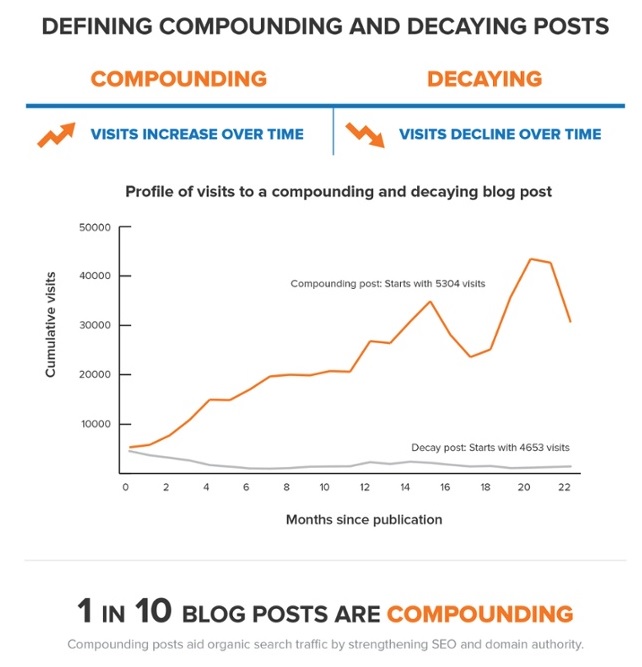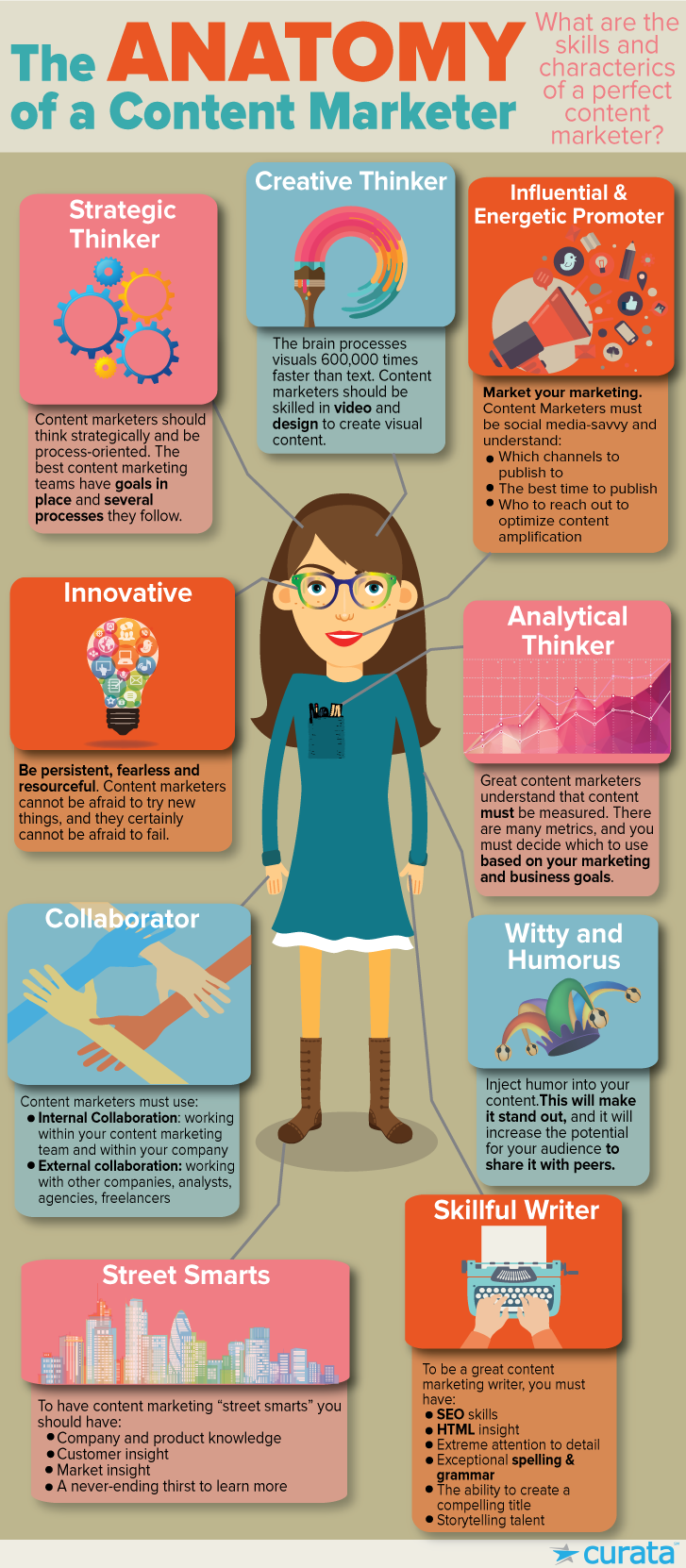A Boost from Paid Methods

Content marketing requires some pieces that are far less tangible than strategy or SEO, but are perhaps the most important.
When it’s truly successful, content marketing is a long-term strategy.
It takes time to start seeing the ROI from your content efforts.
The blog post you publish today will not pay off by tomorrow, next week, or even next month.
Instead, you must have the patience and fortitude to wait months – maybe even up to a year or longer – to start seeing the returns.
The good news?
Content marketing is internet marketing that builds momentum over time. HubSpot calls this phenomenon “compounding.”
High-quality content gets increased visits over time. This helps build the page’s authority, and can increase its reach through the ways people interact with the content as they discover it.
Think linking, sharing, engaging, and more.
Most importantly, all of these compounding returns can help your content climb the Google ranks, which in turn helps it reach more people organically.
Pretty soon, your hard work on that post starts paying off in spades.
It doesn’t happen right away, but it will happen if you set up your content for success, with strategy.
It just takes patience and fortitude to see it through, and to keep putting out content with the months ahead in mind.
Remember, this is a marathon, not a sprint.
Pacing yourself is essential to doing it right – otherwise, you’ll start spinning your wheels, and burnout will be inevitable.
Instead, take stock of where you are in your business.
Think ahead to where you want to go in the next year.
- Do you already have customers?
- Do you have a website?
- Are you starting from square one?
Pick up a pen and paper, or settle yourself in front of your computer, and start formulating some goals for content marketing.
Make your goals achievable (but not too easy), and make them measurable.
Need some guidance about goals?
Here are some tips from CMI on setting goals, including how to tie them to key performance indicators (KPIs).
For ideas about goals to reach for, read this article from Copyblogger on 10 Content Marketing Goals Worth Pursuing.
2. Secure Your Content ‘Home Base’
For content creation, lead gathering, and more, you need a home base on the web.
This is:
- Where your content will live.
- What you’ll link to when you share your content on social.
- Where you’ll gather leads from the traffic you pull in.
If you don’t have a website, start researching options.
If you have a website, make sure it’s optimized, user-friendly, and organized by following SEO and usability best practices.
3. Start Strategizing
Now that you have goals, a home for your content, and enthusiasm, it’s time to surge ahead with the rest of your content marketing strategy.
We’ve already discussed strategy, but here are the actionable steps that make it work:
6 Key, Actionable Steps for Content Strategizing
- Target audience research and brand persona development
- Keyword research and SEO opportunity research
- Topic ideation and content planning
- Creating/writing/producing content
- Community building and nurturing
- Sharing and promoting content on social channels
This is a broad list. Each step has its own set of actions and planning involved.
Yes – this takes time, effort, planning, patience, fortitude, and teamwork to get it all done.
Once you get your internet marketing rolling, though, just one piece of content in your arsenal can have an impact like this:


